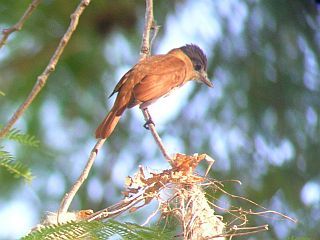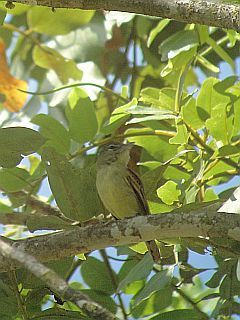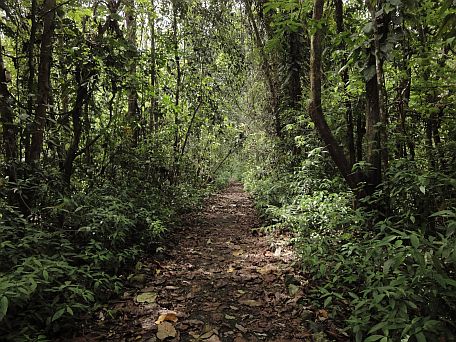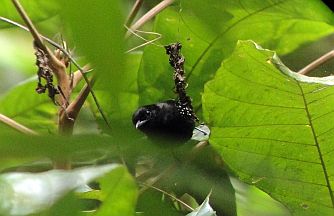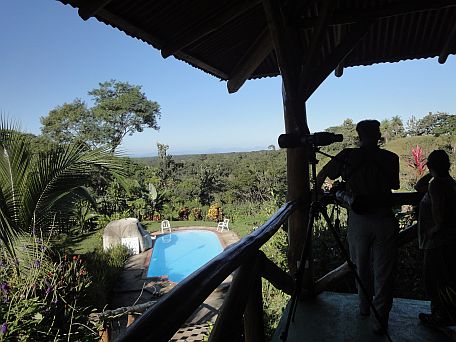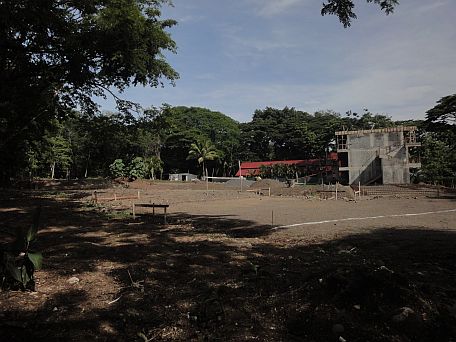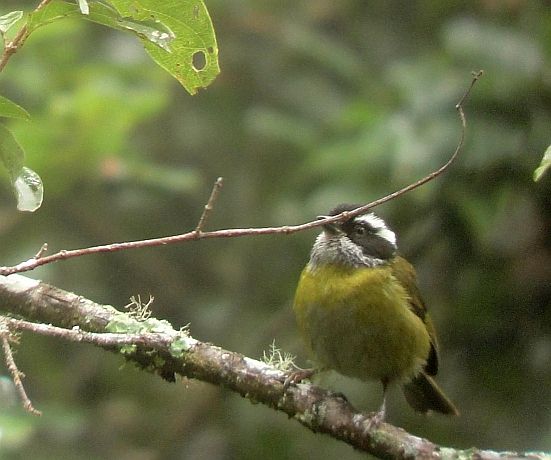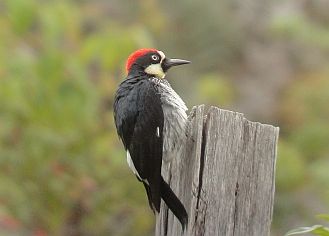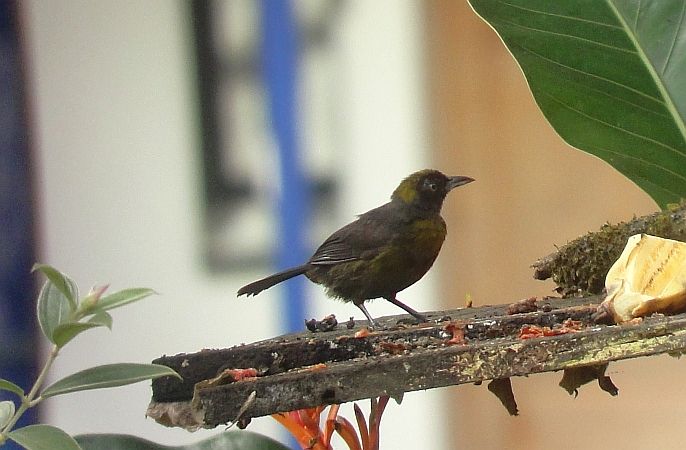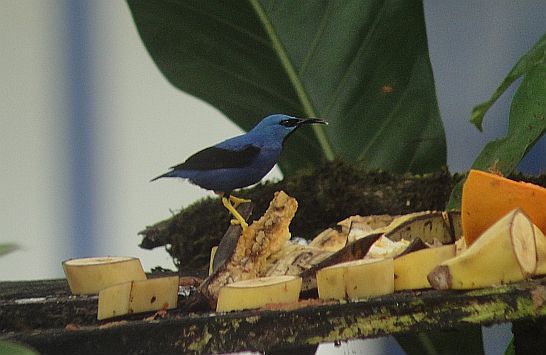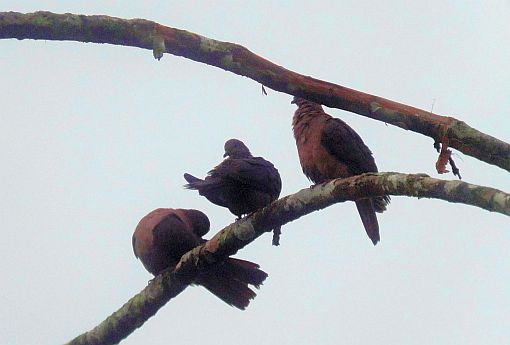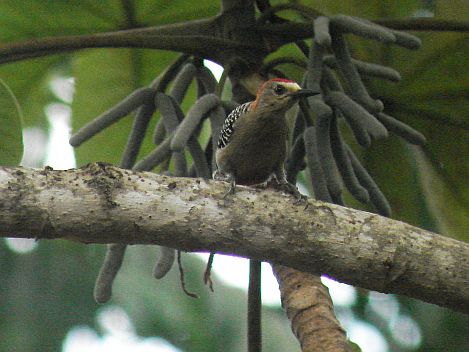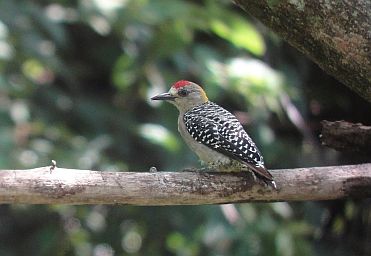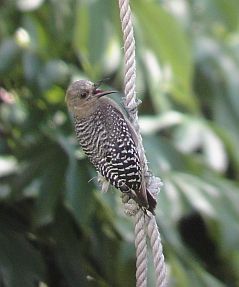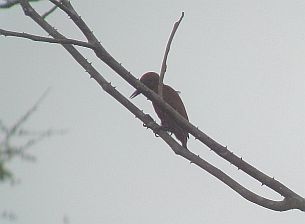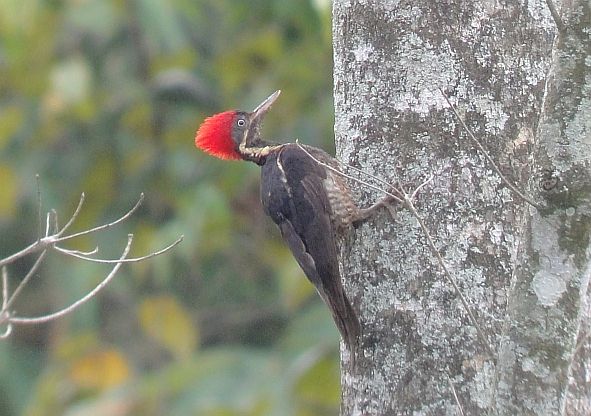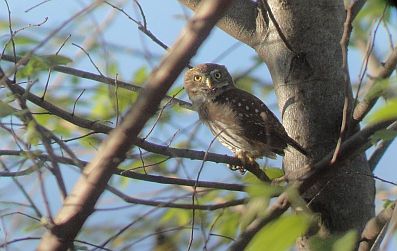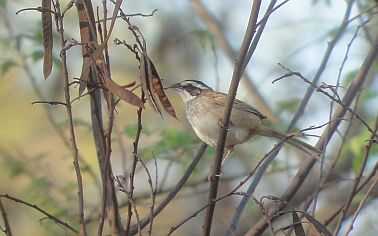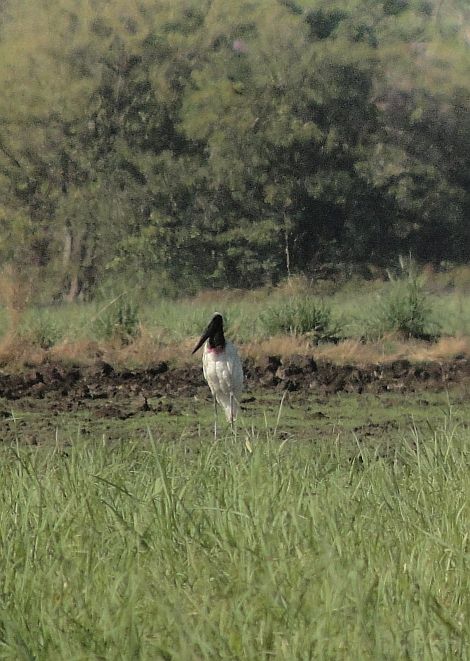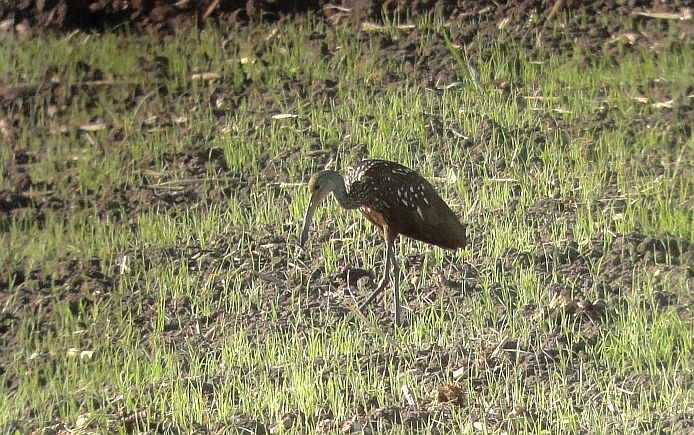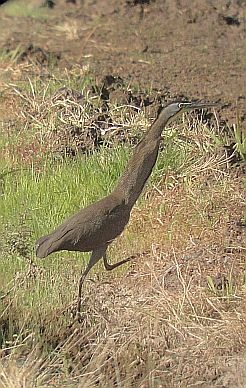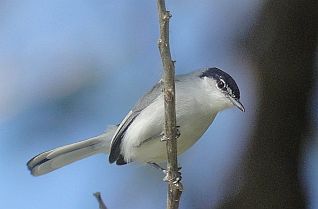Poas Volcano is one of the most visited tourist attractions in Costa Rica. Buses, cars, and even bicycles make the long, uphill trek to Poas National Park every day of the year, weekends being especially popular. Despite the lines of folks who undertake the Poas pilgrimage, very few are birders. They are there for the volcano and they walk up to the edge of the crater to peer down into its sulphury depths and feel as if they have accomplished something. I shouldn’t chide them though because looking into an active volcano is always a feat worthy of effort and mention. It’s a spectacular view on clear mornings and a surreal experience when the clouds roll in to shroud the crater from peering eyes. Definitely worth a visit and especially because it’s an easy hour’s drive from the San Jose area.
Nevertheless, after you get that look into the mouth of the volcano, it’s worth your while to bird the area for the rest of the day. Heck, it might even be worth your while to bird the area for a week! Although Poas and surroundings don’t really find their way into most birding tour itineraries, the general area is much better for birding than most people realize. Not convinced? You might be after reading about yesterday’s guiding in the area:
After picking up Lisa (she who so graciously hired me to guide her) from Casa Tias in Escazu (wonderful bed and breakfast by the way), we wound our way up the flanks of Poas until reaching the Restaurant de Volcan. The lack of shoulders on Costa Rican roads prevented us from doing any roadside birding in the coffee plantations on the way up but we still managed to get fantastic, close looks at a Coyote. Up at the restaurant, the usual set of hummingbirds were doing their thing at the feeders. In a matter of seconds, we watched Violet Sabrewings, Magnificent (Rivoli’s) Hummingbirds, Purple-throated Mountain-Gems, Green Violet-ears, Volcano Hummingbirds, and Green-crowned Brilliants as they chased each other around and guzzled sugar water.
The wonderfully bold and beautiful Violet Sabrewing.
While watching the hummingbirds, a Resplendent Quetzal began to call and before we knew it, a male flew across the road in deep bounding flight! It wasn’t all that close but the combination of beryl upperparts and red-velvet unders was evident. Shortly thereafter, we watched the following species coming to the edge of the forest in quick succession:
Prong-billed Barbet- from another day of birding at Poas and Cinchona.
Mountain Elaenia- one of the most common species there.
Close encounters of the Long-tailed Silky-Flycatcher kind!
Black-thighed Grosbeak- what a hefty, beautiful bird.
We also picked up Band-tailed Pigeon, Squirrel Cuckoo, Red-faced Spinetail, Spotted Barbtail, Yellowish Flycatcher, Gray-breasted Wood-Wren, Clay-colored Thrush, Slate-throated Redstart, Common Bush Tanager, Peg-billed Finch, Yellow-thighed Finch, Slaty Flowerpiercer, Golden-browed Chlorophonia, and heard some distant (and therefore invisible) Barred Parakeets and a Flame-colored Tanager.
After buying some sugary stuff from the restaurant and listening the owner tell us about finding Mountain Lion scat up the hill across the street, we headed over to Varablanca to look for birds on the road that leads to Cinchona (and eventually the Sarapiqui lowlands). As it began to rain, I decided that we might as well check another forested riparian zone on the route that goes past Varablanca and eventually leads down to Santa Barbara. Although the Slaty Finches that were present a few weeks ago had apparently flown the coupe, we still managed excellent looks at Ochraceous Wren and Sooty-capped Bush-Tanager, and saw a few more Long-tailed Silky-Flycatchers. As it started to clear up, we left with high hopes to bird our way to Cinchona.
A few stops in places with the necessary combination of a spot to park the car and roadside forest resulted in a couple of small mixed flocks with highlights being Barred Becard, Dark Pewee, and Yellow-winged Vireo. Near the Peace Lodge, we also got more, ridiculously close looks at Slate-throated Redstarts, Paltry Tyrannulet, and the most confiding Ruddy Pigeon of my birding career.
This Ruddy Pigeon even had the decency to vocalize and reveal its name!
Down at the La Paz waterfall, we made a brief stop to check for Torrent Tyrannulet. As I scanned the boulders in the rushing water, Lisa asked, “What’s this bird over here in the garbage?” Sure enough, there was our tyrannulet playing around in some random piece of plastic trash. We ticked the “trashy” tyrannulet and moved on. After being unsuccessful in our attempt to see a singing Olive-crowned Yellowthroat (but picking up Yellow-bellied Elaenia in the process), we drove on past the Cinchona Cafe de Colibries to check out a birdy area between there and Virgen del Socorro.
This turned out to be a fateful decision.
I parked across the street from the Eucalyptus patch that frequently turns up good birds and sure enough, as soon as I exited the vehicle, a Tufted Flycatcher called and a Black-headed Nightingale-Thrush sang from down in the woods. As I pulled out my playback device to see if we could entice that beautiful orange-eye-ringed bird to show itself, another bird in flight caught my eye and I automatically raised my bins to check it out. Although my first impression was of a Blue-gray Tanager or maybe Clay-colored Thrush that was flying away from me against a white, cloudy background, I stayed on the bird because I wasn’t entirely sure of its identification. As soon as it flew against a backdrop of green vegetation, it transformed into a flying chunk of turquoise and as it swooped up to the top of a tree, I heard myself saying, “Cotinga! Lovely Cotinga!” I think this was followed up by “Do you see it? This is a very rare bird!” After hearing Lisa say that she was on it, I sprinted back to the car for my scope (this of course being the only time I left it in the car). Just after getting the scope out, I then heard Lisa say, “It flew” so, there will be no photo of Lovely Cotinga on the blog today. So close..so close..
Nevertheless, I was pretty happy to see the bird and even happier that Lisa got to see this rarity. In case you are wondering how rare Lovely Cotinga is in Costa Rica, this was only the second time I have ever seen this species, the first being a female at Las Heliconias in April, 2001. Even that was one of the few times it has been seen at that excellent site and I know one top CR birder who didn’t see his first Lovely Cotinga until birding in the country for maybe 20 years (?) and he spends most of his time in the field.
Elated by our good if brief sighting of Lovely Cotinga, we then watched beautiful Bay-headed and Silver-throated Tanagers in the same area along with a much duller female Hepatic Tanager and an electric Scarlet-thighed Dacnis. By the time we saw the dacnis, lunch was calling so we headed back to the Colibri Cafe and enjoyed sumptuous home-cooked food while being entertained by several hummingbirds, including two new ones for the day: Coppery-headed Emerald and White-bellied Mountain-Gem.
The dacnis…it’s electric! -Think of that the next time you are forced to do the Electric Slide at a wedding.
The uncommon White-bellied Mountain-Gem.
Since it started to rain, we hung out there for a while and picked up Olivaceous Woodcreeper, Palm Tanager, and Chestnut-capped Brush-Finch before braving the downpour to head back uphill over a horribly pot-holed and rain-channeled road that we shared with other cars, buses, and hefty trucks. On a side note, sadly, I don’t think that I will be taking that road again until it gets fixed. It’s really gotten that bad!
Although the rain showed no sign of abating, we headed way uphill to the national park entrance in the hope that it would be maybe sprinkling as opposed to pouring. The rain was actually somewhere in between so we looked a bit around there before giving up and slowly driving back down through the temperate rainforests. As the rain lightened, the birds made themselves known and it wasn’t long before we were shielding bins from falling water while looking at a Black and Yellow Silky-Flycatcher.
The oriolish, beautiful Black and Yellow Silky-Flycatcher.
Further downhill, to our great fortune, the rain came close to stopping at a roadside spot that often yields good stuff. Sure enough, we picked up Ruddy Treerunner, Collared Redstart, Mountain Thrush, and Fiery-throated Hummingbird. While peering into the depths of a fruiting avocado, we then managed to see a Black Guan! Before long, a Resplendent Quetzal also started to call! Although it sounded far off at first, we quickly realizes that it was quite close and in a matter of minutes, we were watching our second male Resplendent Quetzal of the day! Much better looks at this one as it sang from its perch. Although it had already molted its long tail feathers, the rest of the bird was still much appreciated.
Another drive back up to the park entrance in search of Sooty Robin and Large-footed Finch didn’t bag those birds but we did get nice looks at Black-billed Nightingale-Thrush. That would have been our final bird of the day if it weren’t for a Gray-headed Chachalaca that planed over the car while heading back down into the Central Valley. We got more than 80 species for the day, one that will surely be a memorable one for Lisa. Since she is headed to Bosque del Rio Tigre today, she’s in for some pretty memorable times there too!











